Abstract
There are strong indications that microbial life is widespread at depth in the crust of the Earth, just as such life has been identified in numerous ocean vents. This life is not dependent on solar energy and photosynthesis for its primary energy supply, and it is essentially independent of the surface circumstances. Its energy supply comes from chemical sources, due to fluids that migrate upward from deeper levels in the Earth. In mass and volume it may be comparable with all surface life. Such microbial life may account for the presence of biological molecules in all carbonaceous materials in the outer crust, and the inference that these materials must have derived from biological deposits accumulated at the surface is therefore not necessarily valid. Subsurface life may be widespread among the planetary bodies of our solar system, since many of them have equally suitable conditions below, while having totally inhospitable surfaces. One may even speculate that such life may be widely disseminated in the universe, since planetary type bodies with similar subsurface conditions may be common as solitary objects in space, as well as in other solar-type systems.
Full text
PDF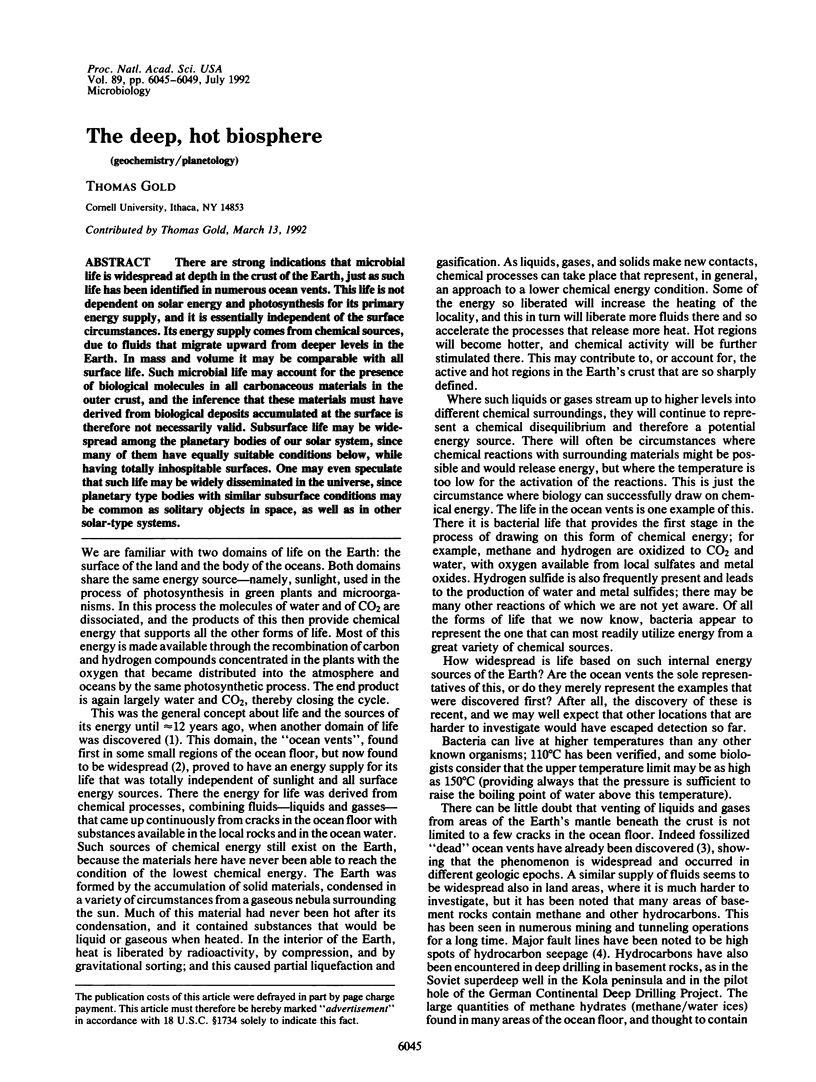
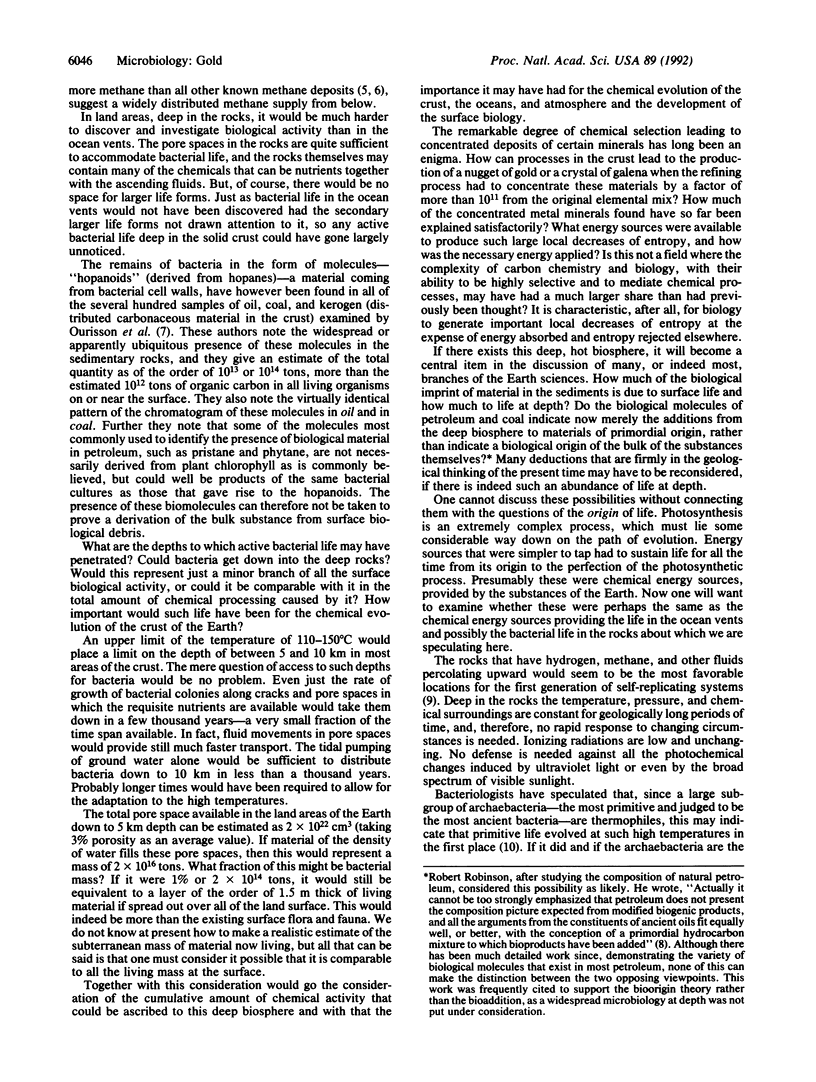
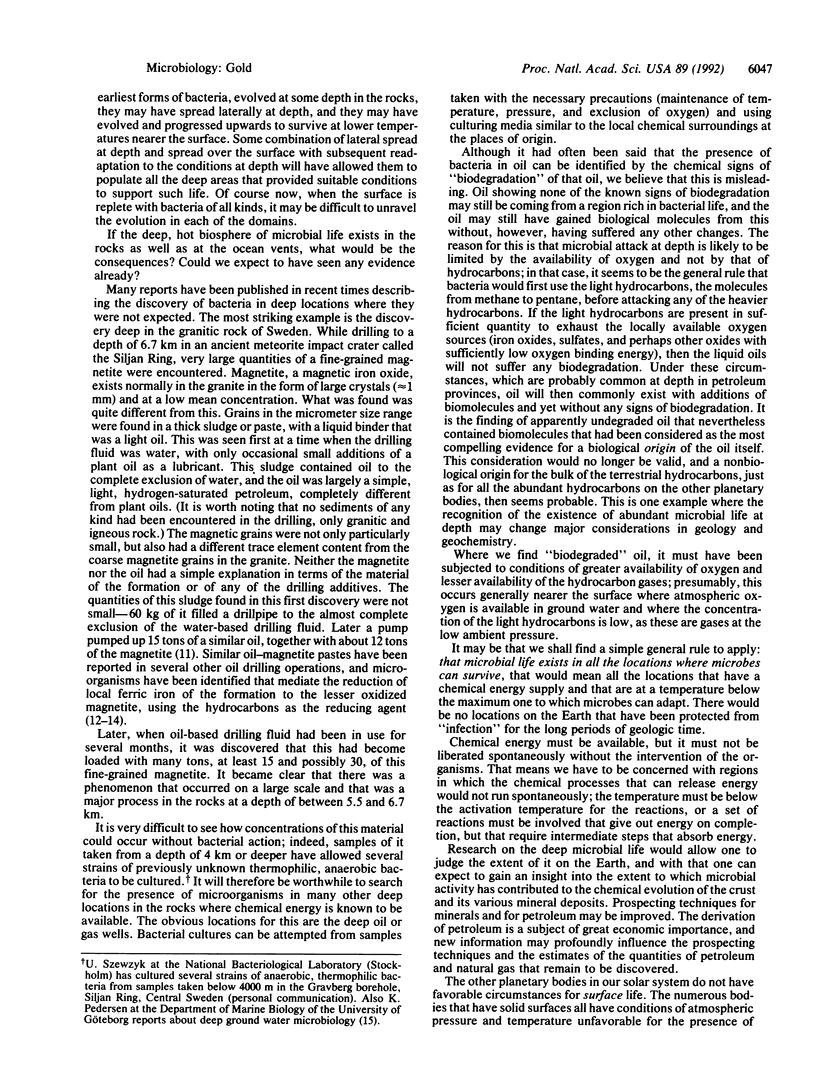
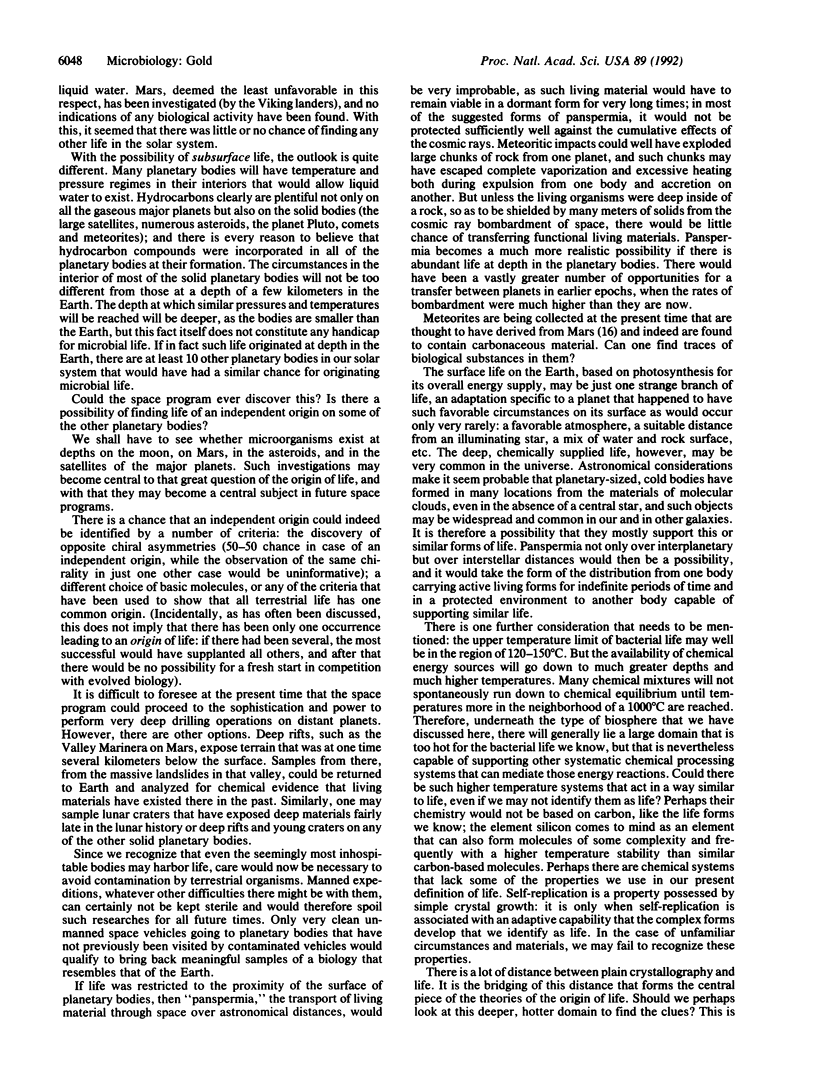
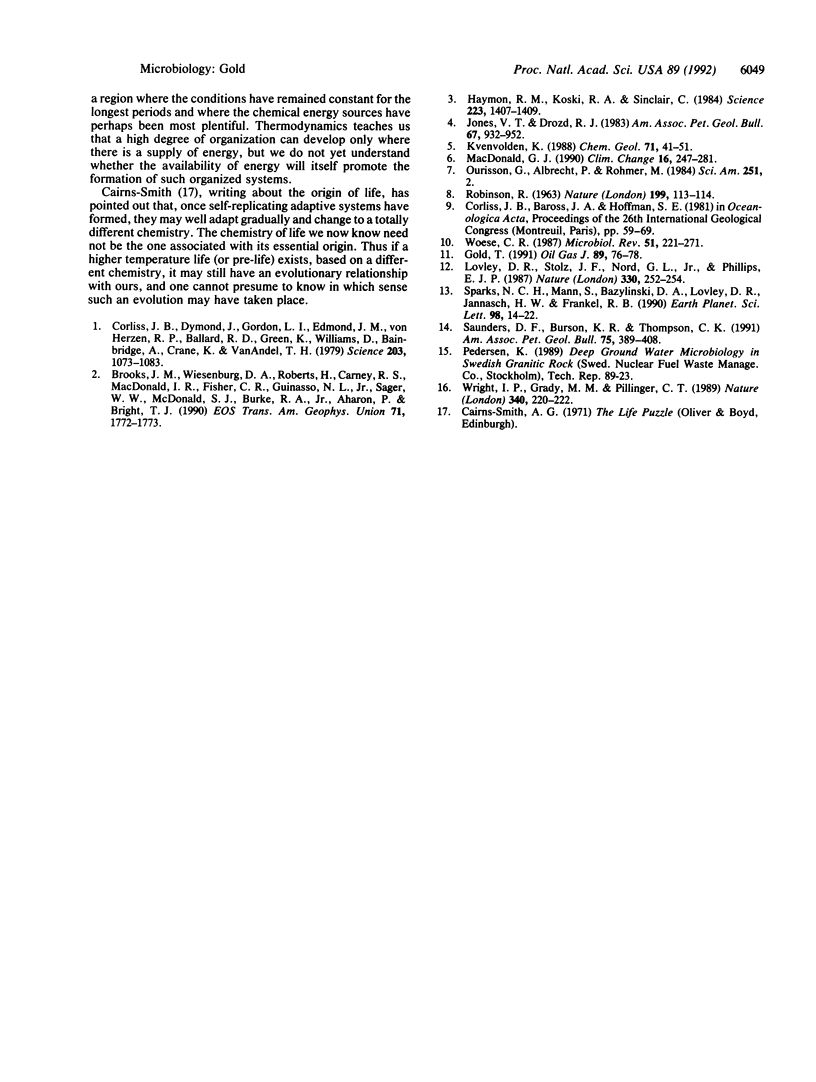
Selected References
These references are in PubMed. This may not be the complete list of references from this article.
- Corliss J. B., Dymond J., Gordon L. I., Edmond J. M., von Herzen R. P., Ballard R. D., Green K., Williams D., Bainbridge A., Crane K., van Andel T. H. Submarine thermal sprirngs on the galapagos rift. Science. 1979 Mar 16;203(4385):1073–1083. doi: 10.1126/science.203.4385.1073. [DOI] [PubMed] [Google Scholar]
- Haymon R. M., Koski R. A., Sinclair C. Fossils of hydrothermal vent worms from cretaceous sulfide ores of the samail ophiolite, oman. Science. 1984 Mar 30;223(4643):1407–1409. doi: 10.1126/science.223.4643.1407. [DOI] [PubMed] [Google Scholar]
- Woese C. R. Bacterial evolution. Microbiol Rev. 1987 Jun;51(2):221–271. doi: 10.1128/mr.51.2.221-271.1987. [DOI] [PMC free article] [PubMed] [Google Scholar]


